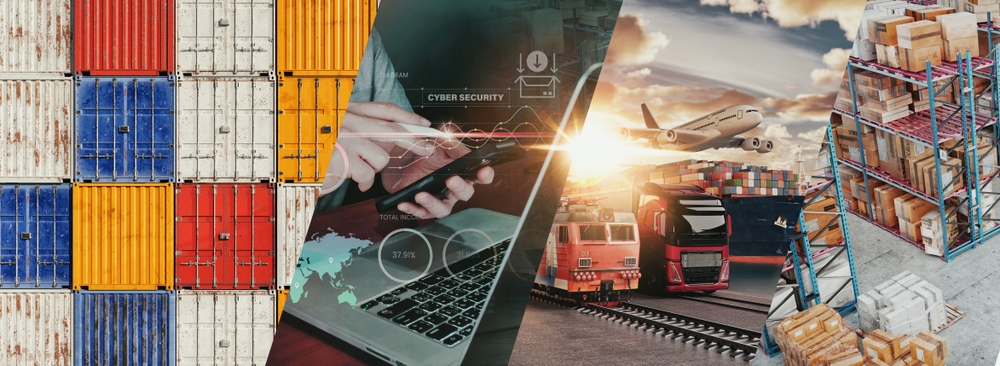Identifying Common Warehouse Flow Bottlenecks
Warehouse operations face productivity and cost issues due to flow bottlenecks. The first step to simplify supply chain processes is spotting these congestion points that affect warehouse optimisation.
Inefficient aisle design and congestion points
Poorly configured aisles create immediate operational challenges in warehouses. Improperly sized aisles substantially affect how material handling equipment works. Forklifts cannot operate safely in narrow aisles without proper clearance. Excessively wide aisles waste valuable storage space.
Congestion becomes a major issue in high-traffic zones, especially receiving and dispatch areas. These vital spaces often have too many staff members and equipment working at once. This creates chaotic processes that cause delays. Traffic jams form as multiple vehicles and workers meet at the same spot, disrupting the entire facility.
Poor SKU slotting and high travel times
Product placement inefficiencies hide some of the biggest costs in warehouse operations. Studies show that travel time makes up about 50% of total picking time. Traditional picker-to-part systems spend half the picking time on travel that adds no value to operations.
Smart slotting strategies based on ABC analysis can cut these travel distances drastically. Items that move fast should be near picking areas. Slower-moving products can go to less available spots. Without strategic product placement, pickers waste time covering long distances between pick locations. This affects labor costs, which make up 50-70% of total operating costs.
Manual handling delays in high-volume zones
Manual picking creates major slowdowns, especially in busy areas. Pickers spend 50% of their time moving instead of picking items. These delays grow worse as more pickers try to work in the same zone.
Dense picking areas get crowded during simultaneous picking and restocking. Workers must guide around each other constantly. This stop-start environment cuts efficiency dramatically. Electric forklifts built for narrow aisles can ease this issue. They enable better storage layouts while keeping high-volume picking zones available.
Warehouse managers can optimize operational flow throughout the supply chain by addressing these common bottlenecks.

Optimizing Layout and Slotting for Forklift Efficiency
A smart warehouse layout and storage setup can make material handling much more efficient. Your warehouse design creates the perfect environment for forklifts to work at their best with minimal wasted movement.
Narrow aisle design for electric forklifts
Electric forklift trucks work great in narrow aisles because they can move with precision that gas-powered models just can’t match. You can shrink aisle width from 3.5 metres to 1.8 metres and pack in 40% more storage without needing extra space. This smart use of space really pays off in expensive city locations where you can’t expand outward.
You’ll need special equipment for narrow aisles. These machines can work in aisles as narrow as 1.6 meters while handling loads up to 25 tons. Multidirectional steering removes the need for wide turns, which lets you place racks closer together.
ABC slotting to reduce travel distance
ABC analysis groups your inventory by how often items move:
- A-items: Fast movers (usually 20% of SKUs that make up 80% of movement)
- B-items: Medium movers
- C-items: Slow movers
This system lets you put your most active products closest to shipping areas. Your pickers travel less distance for frequent picks. The approach also creates better forklift routes since workers spend less time moving between popular spots.
The best slotting plans look at both how fast products move and their physical traits. Heavy items should go on lower levels where special forklifts can reach them easily. Lighter items work well in higher rack spots.
High-density racking systems compatible with side loaders
Drive-in and double-deep racks pack in more storage but can be tricky for regular forklifts. Side loaders solve this problem because they can reach into tight storage spots without losing efficiency.
Specialized side loaders come with telescopic forks that can reach 2-3 positions deep into racks. This feature helps warehouses use high-density storage while keeping good access times. These systems work especially well for businesses that handle long items like timber, steel or pipes—materials that normal forklifts struggle with in tight spaces.
Smart layout and slotting strategies can dramatically improve your space usage and operations. You’ll build a strong system that makes your whole supply chain work better.

Forklift Integration in Warehouse Flow Automation
The integration of automated forklift systems with warehouse management technologies marks a vital step forward in supply chain optimization. These smart systems connect manual operations with fully automated facilities and provide flexibility without needing complete infrastructure changes.
Automated guided forklifts for repetitive transport tasks
Automated guided vehicles (AGVs) have grown beyond basic programmed routes into sophisticated warehouse assets that handle repetitive transport tasks with precision. Today’s AGVs learn routes directly from operators who drive the machines in “learning mode” before switching to automatic operation. This adaptability makes quick deployment possible even in existing warehouse setups.
Self-driving forklifts significantly reduce operational risks in busy environments. The UK reports about five people suffer life-changing injuries from forklift accidents every day. The safety benefits alone make a strong case to implement these systems.
Multidirectional sideloaders with autonomous guidance systems show how traditional forklift capabilities extend through automation. These specialized vehicles direct themselves through narrow aisles and handle both standard pallets and awkward loads with minimal human input.
The higher upfront costs of automated forklifts typically pay off through lower labor expenses, fewer injury-related downtimes, and zero overtime costs. These systems work 24/7 without breaks or holidays and maintain steady throughput regardless of staffing issues.
Load sequencing and buffering with forklift-assisted AS/RS
Buffer systems are the foundations of effective warehouse flow management. They temporarily hold materials between production stages or picking operations. Automated Storage and Retrieval Systems (AS/RS) with forklift integration create smart buffer zones that adapt to workflow changes.
AS/RS buffer systems do more than just store items. They stop downstream processes from running dry during upstream disruptions. They also manage variations from machine downtime, staff changes, or sudden order increases without stopping operations.
Smart buffer management solutions have boosted efficiency significantly. Facilities now operate with 30% less inventory while increasing throughput. This improvement tackles both space usage and process continuity challenges head-on.
Forklift-assisted AS/RS systems shine at sequencing loads for optimal processing. They coordinate pallet movements between storage and processing areas, so materials arrive in the right order at the perfect time to keep production moving smoothly.
Building Resilient Flow Systems Amid Supply Chain Volatility
Supply chain optimization now depends heavily on resilient warehouse flow systems, especially in our unstable markets. Companies lose nearly 45% of yearly profits over a decade due to disruptions that occur every 3.7 years on average. Businesses need adaptable warehouse operations to stay running when these common disruptions hit.
Dynamic slotting based on immediate demand changes
Warehouse slotting has evolved beyond its quarterly schedule into a continuous process that handles unpredictable demand. AI-powered dynamic slotting tools now assign product locations based on changing demand curves. These tools optimize pick frequency, route density and robot travel time. The results are impressive—businesses see 20-40% more throughput and 5-20% better efficiency.
Lucas Systems‘ modern slotting engines can predict SKU movement patterns by analyzing upcoming promotions and expected sell-through speed. Products move closer to exit points before demand increases, not after the surge begins.
Flexible forklift fleets for seasonal volume spikes
Warehouse operations face their biggest test during seasonal demand changes. Businesses with cyclical patterns see their forklift fleets stressed as order volumes grow, shifts get longer, and operators need to move faster than before.
Smart forklift rental strategies let operations adjust their equipment exactly when needed. Short-term leases for different equipment types help companies avoid having too much during slow times or scrambling during peaks. Companies can add the right equipment from providers to their main fleet instead of keeping year-round capacity for seasonal spikes.
Integrating WMS with forklift telematics for flow visibility
Warehouse management systems combined with forklift telematics create complete visibility in supply chain operations. These systems provide immediate data about logistics and operations, which helps companies work around inventory shortages and prevent bottlenecks.
Smart warehouse managers now use telematics to track usage, maintenance schedules, and how well operators perform. This integration shows what’s happening across the entire supply chain network, including external partner systems. Sideloaders with telematics help businesses plan better routes, check equipment health, and find ways to improve their material handling fleet.
Conclusion
We’ve looked at ways to turn warehouse operations from bottleneck-prone environments into well-balanced, quick systems. Warehouses face many challenges—inefficient aisle designs, poor SKU slotting and delays from manual handling slow things down. Leading these solutions are specialized tools.
Smart warehouse layouts deliver amazing results. Narrow aisles combined with the right forklifts boost storage capacity by 40% without needing more space. This helps businesses that work in tight spaces or deal with awkward materials like timber, steel, or piping.
ABC slotting strategies cut down travel distances and make picking faster. Warehouse managers who use these methods with the right forklift solutions see their costs drop while getting more work done.
Automated forklift systems are changing the game. These guided vehicles handle repeated transport tasks precisely and reduce workplace accidents. Forklift-assisted AS/RS systems create smart buffer zones that adjust to workflow changes. This lets facilities run with less inventory but still move more goods.
Supply chain uncertainty means warehouses must stay flexible. Dynamic slotting tools, adaptable forklift fleets, and management systems with telematics help businesses handle unexpected demand shifts and seasonal peaks.
Better warehouse flow needs strategic planning and the right equipment. Electric multidirectional models, specialized sideloaders, or automated systems are great tools to fix bottlenecks and build strong operations. Supply chain challenges will keep evolving, but warehouses with flexible, efficient forklift solutions are ready to succeed despite market changes.


